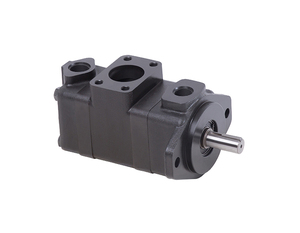- الكلمات - #Vane pump
-
- آخر تحديث ٢ يونيو، ٢٠٢٠ تعليق ٠ , ٢٩٨ views, ٠ مثل
- Taizhou - احصل على الاتجاهات
More from hong yi
More in Politics
Related Blogs
The disadvantage of vane pump is that the oil absorption capacity is slightly worse
الجسم
The advantages of the vane pump are compact structure, small volume (large displacement per unit volume), smooth operation, uniform output flow, and low noise; it can be made into a quantitative pump or a variable pump. Quantitative pump (double-acting or multi-acting) The axial force is balanced, the service life is long, the variable pump variable mode can be various ways, and the structure is simple (such as pressure compensation variable pump).
The disadvantage of the vane pump is that the oil absorption capacity is slightly worse, and it is more sensitive to oil pollution. The vane is extended by centrifugal force, so the speed cannot be too low.
The vane pump is divided into single-acting (variable, internal and external feedback) and double-acting (quantitative) vane pumps according to the mode of action (number of suction and discharge of oil per revolution); divided into single-stage and double-stage vane pumps according to the number of stages; Single pump and double pump; according to working pressure, there are medium and low pressure ((6.3MPa), medium and high pressure (6.3-16MPa) and high pressure (>16MPa) vane pumps, etc.
Working principle of quantitative vane pump
The inner surface of the stator 1 is composed of two large arcs R2, small arc R1 and four transition curves (1, 2, 3, 4), and the stator and the rotor are concentric. The four oil distribution windows opened on the oil distribution plate communicate with the oil suction and pressure ports respectively.
When the rotor shown in the figure rotates clockwise, the blades embedded in the rotor slots (which can slide flexibly) are pressed against the inner surface of the stator by centrifugal force and pressure oil. In this way, the stator, the rotor, the slidable blades, and the oil distribution plate form a plurality of closed working chambers with variable volumes. In the upper right corner and the lower left corner, the volume of the sealed working chamber gradually increases, which is the oil suction area; in the lower right corner and the upper left corner, the volume of the sealed working chamber gradually decreases, which is the oil pressure area.
A section of oil seal area between the oil suction area and the oil pressure area separates them. Each revolution of the rotor, each blade slides back and forth twice, and the volume of each closed working volume is circulated twice, and it becomes larger and smaller twice. , To complete the role of the pump, called double-acting vane pump. In addition, the two oil inlet and outlet oil chambers of the pump are diametrically opposed, so the rotor is hydraulically balanced, and the bearings are not subject to hydraulic loads. Long life can be guaranteed.
If you want to know more related information, you can click here: vane pump supplier.













تعليقات